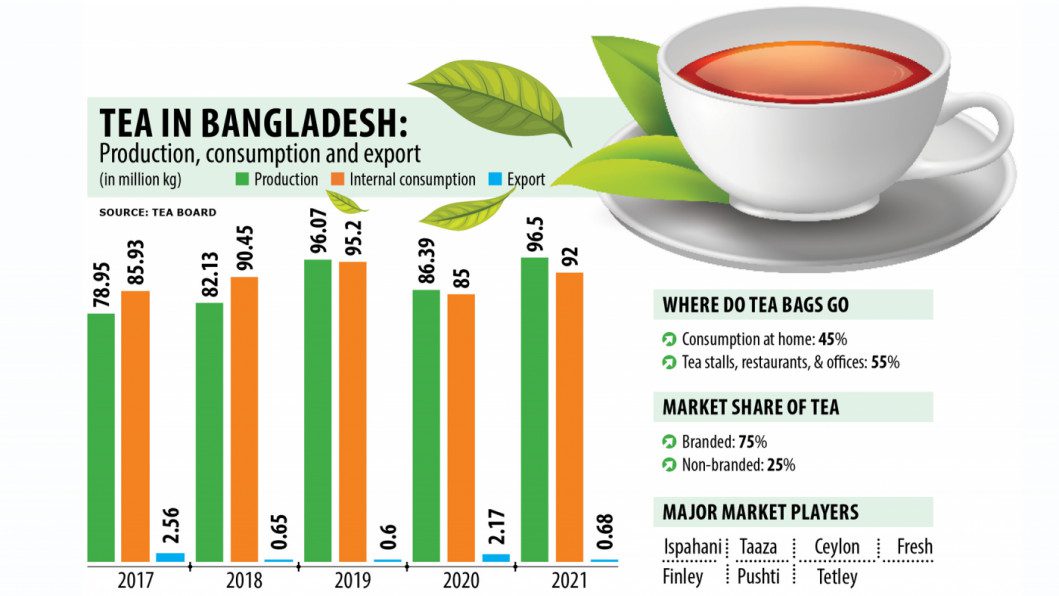ISPAHANI Tea sales are increasing, approaching pre-pandemic levels
Tea sales in Bangladesh have been steadily increasing as people have been returning to drinking tea outside of their homes. Before the pandemic, most consumption of tea took place outside of the home, but during the lockdowns people were forced to stay home and make tea there instead. Now that the lockdowns are lifted, people are starting to drink tea outside again.
The coronavirus situation has improved, and with that, the consumption of tea is increasing. Shah Moinuddin Hasan, general manager of ISPAHANI Tea Ltd, told The Daily Star that most people like to take tea outside of their home. In Bangladesh, 45 per cent of tea is consumed at the household level while the rest at tea stalls, restaurants, and offices.

Tea sales picking up, inching towards pre-pandemic level
The sales of tea received a major boost in 2021 after the government lifted the lockdown restrictions to allow roadside stalls and restaurants to reopen and serve customers again.
Mahmud Abbas Siddique, owner of Abid Tea Stall in the West Tejturi Bazar area at the capital’s Farmgate, has been running the stall for five years.
Before the pandemic, he used to sell about 600 cups of tea daily. When he got the chance to reopen after a two-month strict lockdown, he managed to sell 200-250 cups a day as customers were not much keen to drink outside.
Siddique told The Daily Star that he currently sells 550-600 cups of tea each day. In 2021, tea sales rose by 8.25 percent in comparison to the previous year. This close to the pre-pandemic level of 95.20 million kgs.
It is believed that due to the Covid-19 pandemic, tea consumption decreased by 10-15 percent. However, prior to the pandemic, tea consumption was growing at a rate of 10 percent each year due to a number of factors such as higher incomes, urbanization, and a growing middle class.
Tea is a popular beverage worldwide, consumed by people of all social and economic groups. In Bangladesh, tea consumption has outstripped local production in recent years, leading the country to import tea to meet demand.
In the two years preceding 2020, an average of 78.95 million kgs of tea were produced annually, while annual consumption averaged 85.93 million kgs. However, due to the outbreak of the COVID-19 pandemic, these numbers decreased to 82.13 million kgs and 90.45 million kgs respectively. According to data from the Bangladesh Tea Board (BTB), had there been no pandemic, the annual consumption would have crossed 100 million kgs in 2020.
Munir Ahmad, deputy director for planning at the BTB, said that annual tea consumption may shoot to 130 million kgs by 2025.
In Bangladesh, branded tea dominates the market with 75 per cent share, while the rest going to non-branded producers.
















